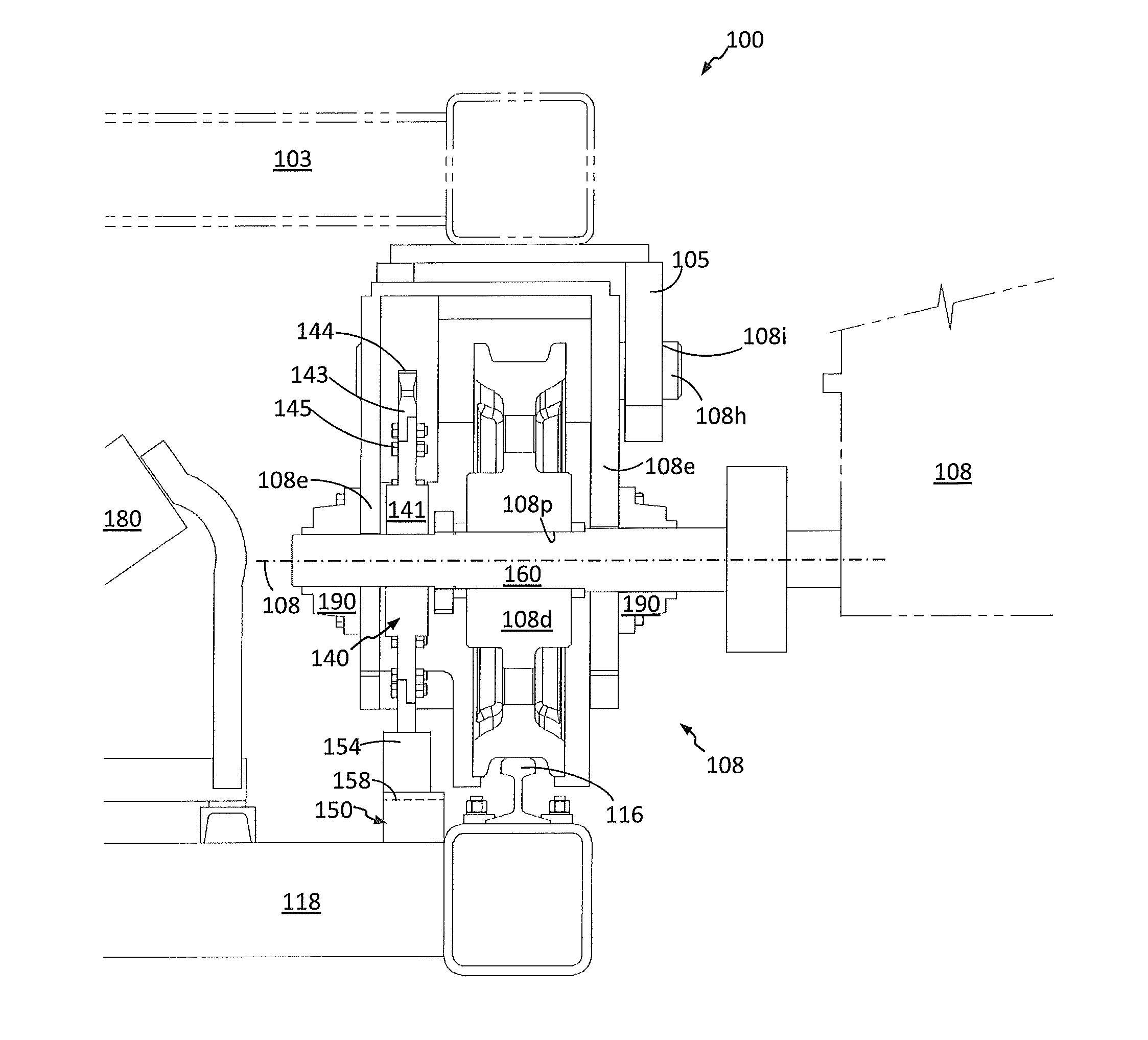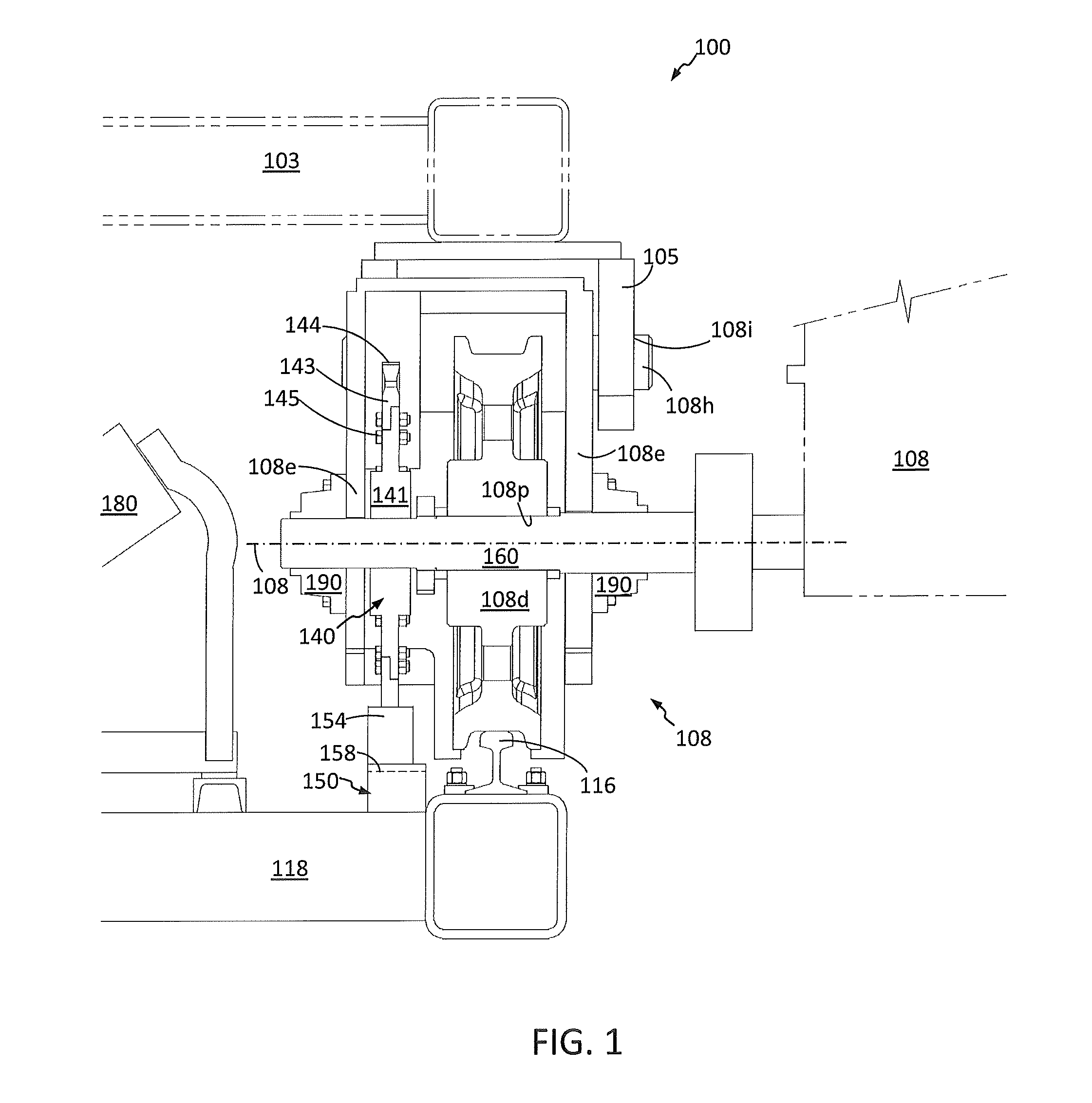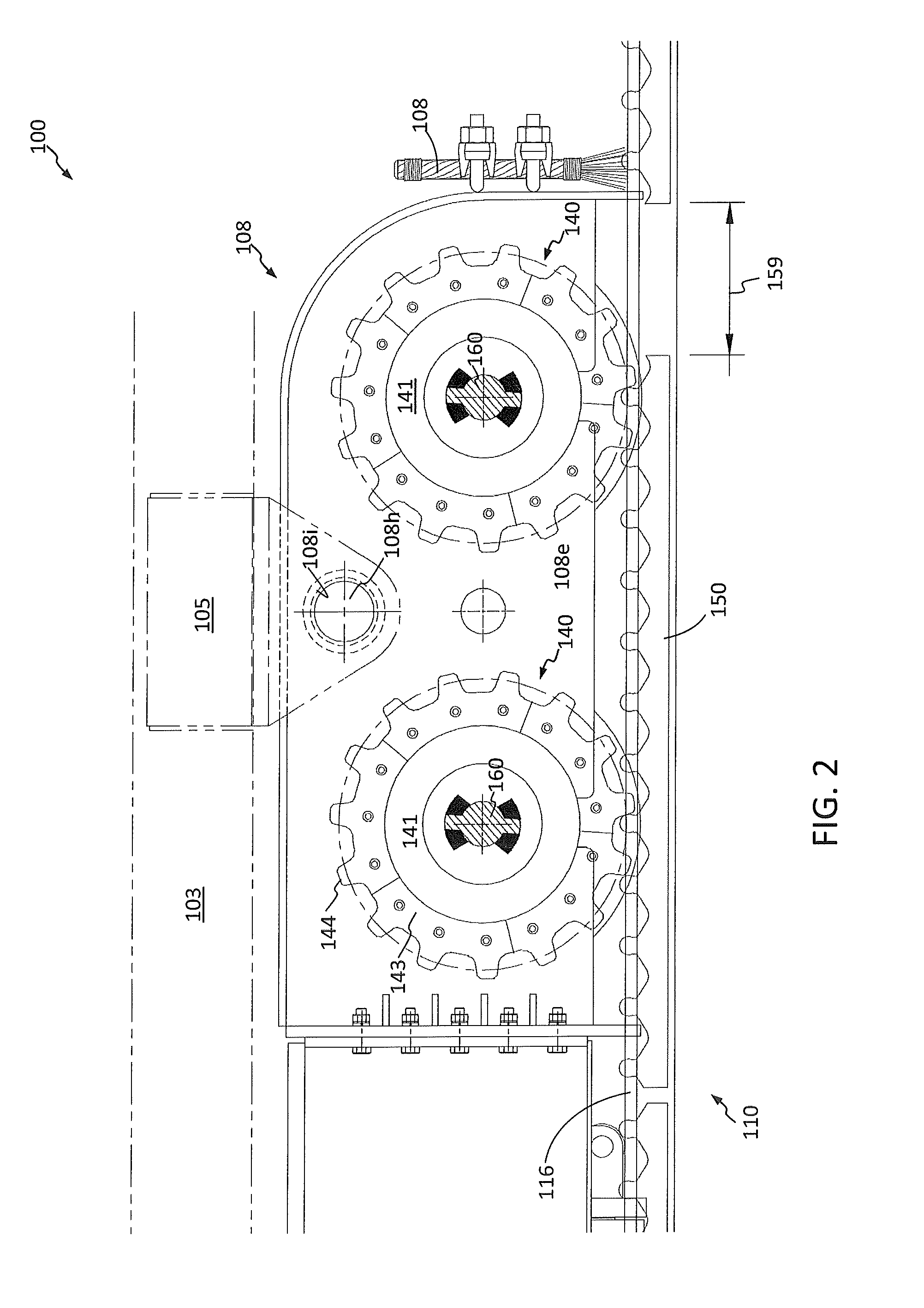Conveying device and process for operating the same
a technology of conveyor system and inclination angle, which is applied in the direction of mechanical conveyors, conveyor parts, loading/unloading, etc., can solve the problems of reducing the mobility and versatility of a tripper conveyor system, limiting the mobility and versatility of the system, and reducing the abovementioned conventional tripper driv
- Summary
- Abstract
- Description
- Claims
- Application Information
AI Technical Summary
Benefits of technology
Problems solved by technology
Method used
Image
Examples
Embodiment Construction
[0045]FIGS. 1-8 show a direct engagement drive system 108 for a tripper conveyor system according to some embodiments. A tripper 100 configured to rest on a conveyor 110 comprises a tripper frame 103 and feet 105, to which one or more drive systems 108 are attached. Multiple drive systems 108 may be provided to each foot 105. For example, as shown, each foot 105 may comprise two drive systems 108. Depending on which direction the tripper 100 is traveling, one of the two drive systems 108 serves as a lead drive system and the other of the two drive systems 108 serves as a follow drive system. The drive systems 108 are secured to a mount 108e which may be pivotally attached to each foot 105 by way of a joint 108h and / or a bushing 108i. The mount 108e may completely encase portions of each drive system 108 to protect components of the drive system 108 from dust and dirt ingress. For example, in some embodiments, such as the one shown, mount 108e may comprise a wheel box constructed of ...
PUM
 Login to View More
Login to View More Abstract
Description
Claims
Application Information
 Login to View More
Login to View More - R&D
- Intellectual Property
- Life Sciences
- Materials
- Tech Scout
- Unparalleled Data Quality
- Higher Quality Content
- 60% Fewer Hallucinations
Browse by: Latest US Patents, China's latest patents, Technical Efficacy Thesaurus, Application Domain, Technology Topic, Popular Technical Reports.
© 2025 PatSnap. All rights reserved.Legal|Privacy policy|Modern Slavery Act Transparency Statement|Sitemap|About US| Contact US: help@patsnap.com



